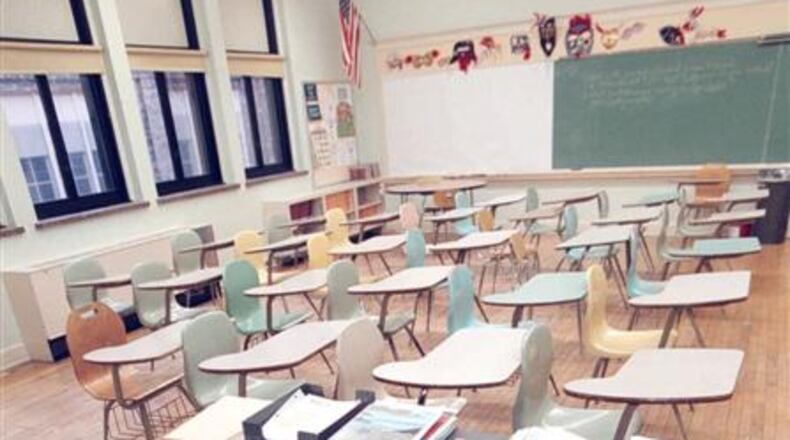A new report compares teacher wages to those earned by other college graduates. While teaching once compared favorably, these updated findings will not surprise public school teachers: They are losing ground in salary.
The Economic Policy Institute report also sounds an alarm for future staffing of schools:
The supply of teachers is diminishing at every stage of the career ladder. On the front end, fewer students are entering the profession. Generally speaking, the small fraction of the most cognitively skilled college students who elect to become teachers has declined for decades (Corcoran, Evans, and Schwab 2004). Several factors have helped to drive this trend. Over the long run, employment opportunities for women have greatly expanded, and thus the teaching profession can no longer rely on what was a somewhat captive labor pool. At the same time, teachers are less satisfied and more stressed as standardized testing has been elevated as a tool for student, school, and teacher evaluations.
The report notes:
In 1979 teachers earned 21.4 percent less than other college graduates. The gap between teachers and other college graduates narrowed into the mid-1990s but then widened considerably during the tight labor markets of the late 1990s into the early 2000s. There was a 53 percent jump in wages for non-teacher college graduates from 1979 to 2002 during an unusual recent time of exceptional wage growth. This was a time when inflation-adjusted wages grew strongly among low-, middle-, and high-wage earners—but this was not the case for teachers. This is due to the long-term contracts teachers have and the fact that public-sector wages are not as volatile (both up and down) as private-sector wages. The gap has been fairly consistent throughout the 2000s; teachers' wages slightly declined, as did wages for other college graduates. In 2015 the teacher wage disadvantage compared with other college graduates was 22.8 percent, or $323 per week—substantially higher than the 13.1 percent disadvantage in 1996.
"Teachers today earn 17 percent less than workers with similar qualifications — skyrocketing from just a 1.8 percent difference in 1994. Even worse, the gap is bigger for more experienced teachers, meaning that the more expertise teachers develop, the less they’re rewarded for it," said American Federation of Teachers President Randi Weingarten in response to the report released Tueday.
“This report is a scathing indictment of how this country values educators. It highlights the hypocrisy of paying lip service to the importance of teaching and teachers while simultaneously failing to invest in educators, students and the schools in which they teach and learn," Weingarten said. "When you shortchange educators, you shortchange the students they teach. We need to ensure educators are valued so we can recruit the best and brightest to the classroom. We need to make sure they’re supported and paid like the professionals they are.’’
Here is an EPI chart that shows the widening pay penalty.
Credit: Maureen Downey
Credit: Maureen Downey
Here is the official release, but take a look at the report as it is quite interesting:
When adjusted for education, experience, and demographic factors, teachers earned 1.8 percent less than other workers in 1994, while in 2015 the teacher wage penalty had grown to 17 percent.
Although teachers on average enjoy better benefits packages than similar workers, Mishel and Allegretto find that benefits only mitigate part of the wage gap. Including benefits, teachers are still left with a record-high 11.1 percent compensation gap compared to similar workers.
"In order to recruit and retain talented teachers, school districts should be paying them more than their peers," said Mishel. "Instead, teachers face low wages, high levels of student debt, and increasing demands on the job. Eliminating the teacher pay penalty is crucial to building the teacher workforce we need."
Collective bargaining does abate part of the wage gap. Teachers benefiting from collective bargaining have a wage gap 6 percentage points less than teachers who are nonunion.
"Once again, unions prove their importance in protecting teachers from a much larger pay gap," said Allegretto. "For women, especially, being a member of a teacher's union can have a major impact on earnings."
The growing wage penalty for teachers has contributed to an insufficient supply of teachers at every stage of the career ladder. A recent study showed that only 5 percent of college-bound students were interested in education. Moreover increased pressure from testing, state budget cuts, and demand for smaller class sizes has put strains on retaining sufficient mid-career teachers.
Other key findings include:
•Since 1996, teacher pay has decreased $30 per week (from $1,222 to $1,092 in 2015.) In this same time period, college graduates' average weekly wages have increased from $1,292 to $1,416 in 2015.
•Experienced teachers have felt the erosion in pay more than entry-level teachers. In 1996, the most experienced teachers enjoyed a pay premium of +1.9 percent. In 2015, it had fallen to a pay penalty of -17.8 percent.
•The wage penalty has grown remarkably among women. In 1960, female teachers earned 14.7 percent more than comparable female workers. However, in 2015, the authors find a -13.9 percent wage gap for female teachers.
•The wage penalty for male teachers is much larger. The male teacher wage gap was -22.1 percent in 1979 and improved to 15.0 percent in the mid-1990s, but worsened in the late 1990s into the early 2000s. It stood at 24.5 percent in 2015.
About the Author
Keep Reading
The Latest
Featured




